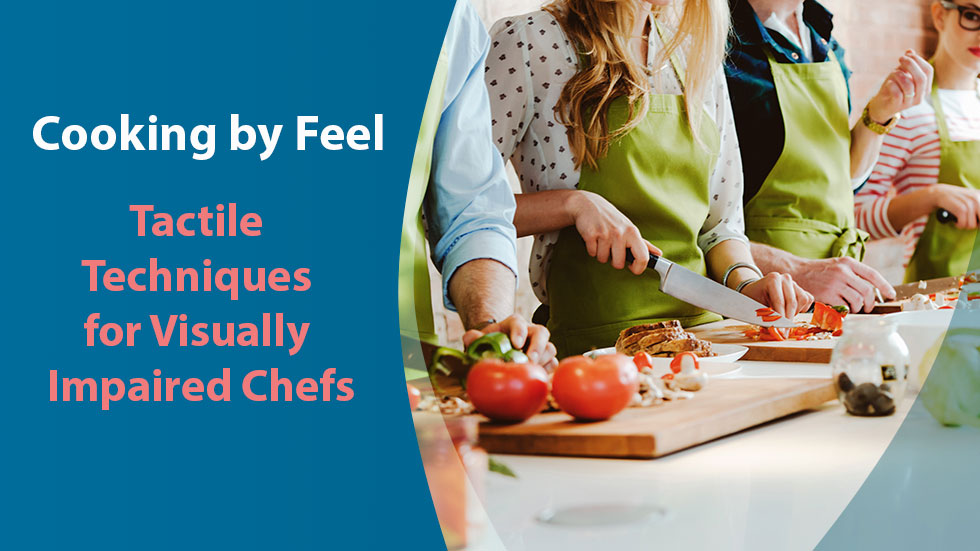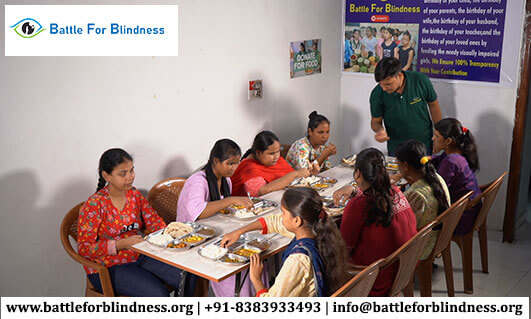
Cooking is a sensory experience that engages taste, smell, sight, and touch. For visually impaired individuals, the art of touch becomes especially significant, allowing them to navigate the kitchen confidently and effectively. Tactile cooking techniques empower cooks to use their sense of touch to measure, prepare, and cook food successfully. Here’s how to master these techniques and create delicious meals with confidence.
1. Understanding Texture and Temperature
Texture and temperature are crucial components in cooking. By learning to recognize these elements through touch, cooks can enhance their culinary skills.
- Recognizing Texture: Use your fingers to feel the texture of ingredients. For example, grains like rice should feel smooth, while chopped vegetables can feel crunchy. This skill helps in determining ripeness and freshness.
- Temperature Awareness: Use the back of your hand or fingertips to gauge the temperature of pots and pans. This technique can prevent burns and help you identify when something is ready to cook.
2. Measuring Ingredients by Feel
Accurate measurements are essential in cooking, and tactile techniques can help achieve precision without relying on sight.
- Using Measuring Tools: Tactile measuring cups and spoons often have raised markings that allow you to identify measurements by touch. Use these tools to ensure accurate portions of dry and liquid ingredients.
- Finger Measurements: For ingredients like grains or flour, you can estimate amounts by using your fingers. For example, a pinch, a tablespoon, or a cup can be measured by knowing the size of your fingers relative to the ingredient.
3. Chopping and Preparing Ingredients
Chopping can be daunting for visually impaired cooks, but using tactile techniques can make it easier and safer.
- Using Knives Safely: Grip knives with a firm but gentle hold. Learn to recognize where the blade and the cutting board meet by feeling for the edge. Always keep fingers curled under to avoid accidental cuts.
- Tactile Guides: Consider using finger guards or cutting mats with raised edges to help keep ingredients in place while chopping. This setup provides safety and control while you work.
4. Cooking Techniques through Touch
Different cooking techniques can be mastered through touch, making it easier to manage various tasks in the kitchen.
- Sautéing and Stirring: When sautéing, use your sense of touch to determine how the ingredients feel as they cook. A smooth, soft texture indicates that vegetables are tender, while a slight crunch shows they need more time.
- Baking by Feel: When baking, feel for the dough’s consistency. A well-kneaded dough should feel smooth and elastic. Use your fingers to check the texture of batters and mixtures to ensure they are properly combined.
5. Tactile Techniques for Plating and Presentation
Presentation is an important aspect of cooking, and tactile techniques can enhance the visual appeal of dishes.
- Feel for Balance: As you plate food, use your fingers to ensure that components are evenly distributed. Feeling the weight and placement of each item can help create an appealing presentation.
- Using Touch for Garnishing: Garnishing can elevate a dish. Use your fingers to sprinkle herbs or arrange ingredients artfully. Trust your tactile senses to create visually pleasing designs.
6. Adapting Kitchen Tools
Several adaptive kitchen tools can enhance tactile cooking techniques, making the process easier and more enjoyable.
- Talking Thermometers: These devices announce the temperature of food, helping cooks know when meats are thoroughly cooked.
- Braille Labels: Labeling spices and ingredients in Braille can make it easier to identify items by touch, simplifying the cooking process.
- Color-Contrasting Utensils: Using utensils with different textures or colors can help with identification and add a tactile element to your cooking experience.
7. Building Confidence in the Kitchen
Mastering tactile cooking techniques can significantly boost confidence in the kitchen. Here are some ways to cultivate this confidence:
- Practice Regularly: The more you cook, the more comfortable you’ll become with various tactile techniques. Start with simple recipes and gradually progress to more complex dishes.
- Experiment with New Ingredients: Trying new ingredients and techniques will enhance your touch-based skills and open up new culinary possibilities.
- Seek Feedback: Don’t hesitate to ask for feedback from family or friends. Their insights can help you refine your skills and techniques.
Conclusion
Mastering tactile cooking techniques can transform the kitchen experience for visually impaired individuals, making cooking accessible and enjoyable. By focusing on touch, cooks can develop confidence, creativity, and culinary expertise. Remember, cooking is an art form that goes beyond sight; it’s about engaging all the senses, especially touch. Embrace this unique approach to cooking, and let your hands guide you to delicious and satisfying meals.





